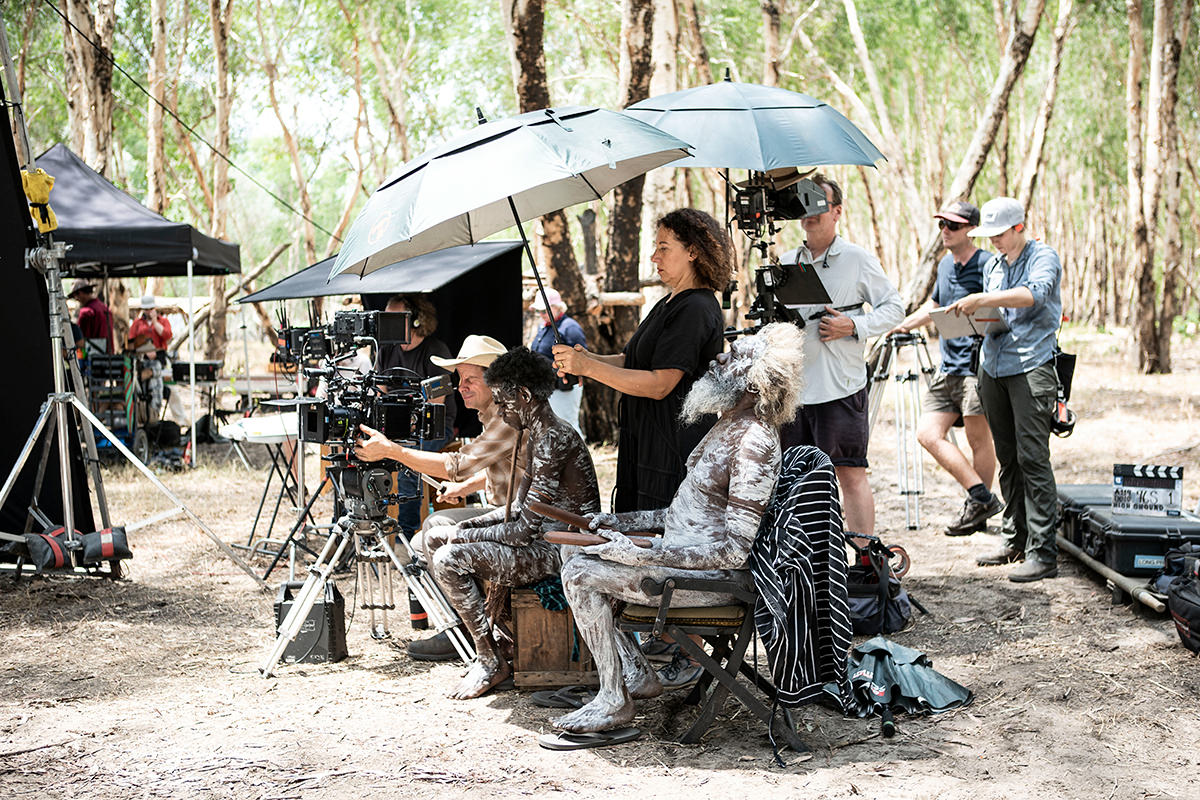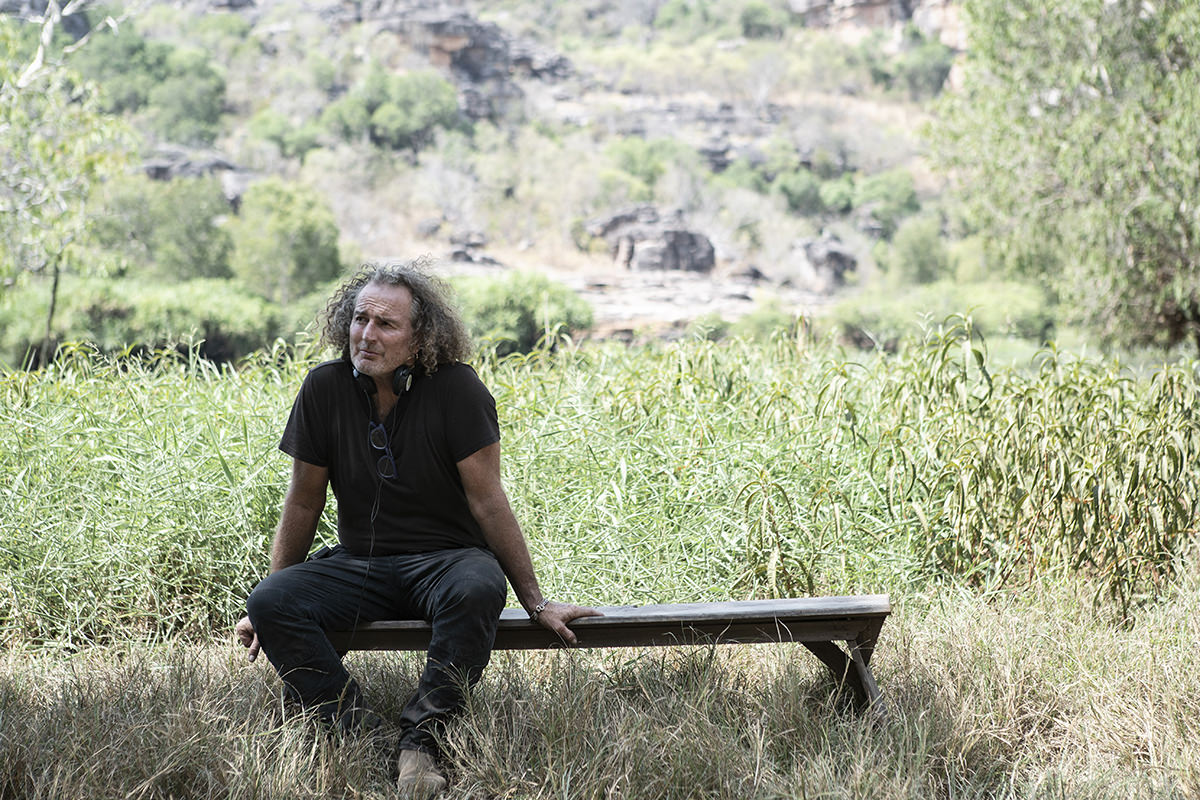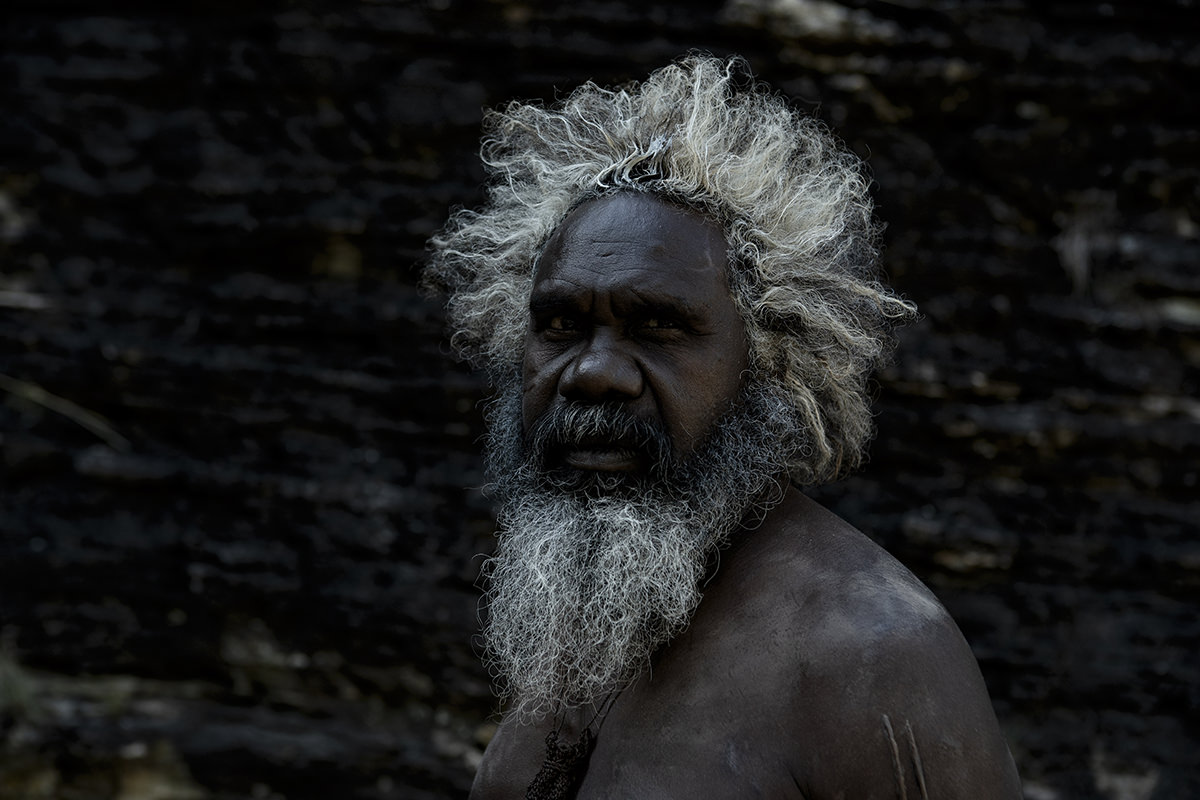High Ground: creating an outback thriller that resonates
Producer/actor Witiyana Marika and director Stephen Maxwell Johnson talk about their 20-year journey toward making High Ground.
 Witiyana Marika (front) on the set of High Ground
Witiyana Marika (front) on the set of High Ground
**Aboriginal and Torres Strait Islander readers are advised the following article contains the names of deceased peoples**
High Ground might appear from the outset as a western, but the never-before-seen locations and suspenseful untold story are so unique that director Stephen Maxwell Johnson has a different term in mind.
“It's fair to say we've called the film a northern, as opposed to western,” Johnson, who also produced High Ground through his company Maxo Studios, says over the phone from the Northern Territory.
“We really feel it's a film that immerses the audience in a time and place and that perhaps hasn't happened in this way before.”
Part of the name ‘northern’ is because the film is intrinsically linked to the Northern Territory, where it’s set in 1919, but also because of its story. Producer Witiyana Marika - also on the phone call - says the “northern action thriller” is fictional, but inspired by and weaved from the many stories of First Nations people that’s missing from history books.
“This talks about our way, what happened,” he says. “It’s from lots of different stories and representing all other nations right across.”
High Ground follows young Aboriginal man Gutjuk (played by newcomer Jacob Junior Nayinggul) who years after the massacre of his family and cover-up by local authorities, joins forces with an ex-solider (played by Simon Baker) to track down his Uncle, the most dangerous warrior in the country.
It’s a story Johnson and Marika (who was also senior cultural advisor and plays the part of Grandfather Dharrpa) first began developing more than two decades ago when Johnson directed the video clip for Yothu Yindi’s song Treaty.
“Both [Dr M] Yunupingu and Witiyana were the co-founders of Yothu Yindi and we struck up a very, very close, dear friendship,” Johnson says. “We shared ideas about what we could do with the song Treaty and from that day on we've spoken about telling the story of resistance in our country.”
“Fair dinkum,” adds Marika. “And we came up with this idea that we should make a film.”
Along with the trio of Johnson, Marika and Dr M Yunupingu, writer Chris Anastassiades (who wrote Johnson’s 2001 feature film debut Yolngu Boy) brought the story together, with the support of producer Maggie Miles and actor Jack Thompson.
In a statement from Gumatj (Yolngu) leader Galarrwuy Yunupingu, brother of Dr M Yunupingu, High Ground is referred to as a “both-ways film”, between First Nations and Balanda (non-Yolngu).
Marika says in that way the film works on multiple levels and educates people from both perspectives, by sharing ideas to create a bridge between the two cultures.
“If you make an Australian movie that was made right here in the Top End, Arnhem Land, Kakadu, there's two ways learning,” he says. “Education for our crew, the next generation… and educating our non-Indigenous people through the film.”
Johnson explains that Dr M Yunupingu was a big proponent of this both-ways education.
“We honour him in our film,” he says (there is also a dedication to Dr M Yunupingu in the High Ground closing credits). “It looks at two different perspectives, and that's how we made the film. We've come together as people… and created a story together.”
 Stephen Maxwell Johnson
Stephen Maxwell Johnson
Filming in remote parts of the Northern Territory wasn’t without its challenges though. In the latest episode of the Screen Australia Podcast, producers Greer Simpkin and David Jowsey talk about the very real danger of saltwater crocodiles, which surrounded Cahill’s Crossing – a stretch of road they had to drive over to get to set and could only do so at low tide.
“It’s tough filming out there,” Marika agrees. “The big challenges were the heat and the environment. It’s very hot and dry. There was a lot of reptiles, and buffalo and snakes.”
Marika is a respected Rirratjingu (Yolngu) ceremonial leader and was also senior cultural advisor on High Ground, negotiating the complexities between different Indigenous clans who joined together to work on different lands. The Traditional Owners of Cannon Hill, Arnhem Land, and Jawoyn are all executive producers on the film. It was with all of their blessing, that High Ground also had unprecedented access to country that had never been filmed on or seen on screen.
“Elders and families gave us very special permission to go on certain country,” Johnson says. “We were sung into that country by the appropriate landowners and made to feel very welcome. And there was a beautiful spirit on set each day: there was something looking after us and getting us through, as difficult and challenging as each day was.”
Johnson hopes that Australians going to see High Ground are taken into an immersive experience through time that also rings a deeper chord.
“It was always our intention to create a story that was first and foremost entertaining,” he says. “And sure, we'd love to think that people will open their hearts: that we can rethink our history together and learn from the oldest living culture on earth that we have here….
“Witiyana and I just hope that the film helps elevate the awareness of the power of Aboriginal identity and culture as something we want to understand more about and really, truly celebrate as a nation together. We do hope that people are entertained, but do go on a journey that perhaps does make cause for a reflection about who we all are as humans and make us all proud.”
High Ground is in Australian cinemas through Madman Pictures now.
 Witiyana Marika in High Ground
Witiyana Marika in High Ground

What to read next
Producers Steve Hutensky and Jodi Matterson of Made Up Stories talk through shooting and releasing titles in the midst of a pandemic.
14 Jan 2021
Caris Bizzaca